(E. Reintam, G. Stegarescu)
Soil structure can be defined from pedological, engineering, ecological and edaphological approaches. In pedological terms, soil structure is a “three dimensional arrangement of individual mineral grains and organic constituents” (Lal, Shukla, 2004). More common is definition that soil structure is defined as the combination and arrangement of primary (individual) soil particles into secondary structural units that form aggregates. The aggregates are separated from each other by pores or voids (Bradly, Nyle, 2008).
Soil structure is important because it is one of the major factors determining how fast water and air enter and move through the soil, which in turn influences soil resource, such water and nutrients availability for plants and habitat for soil organisms.
Brady, Nyle C. 2008. Nature and properties of soils. Upper Saddle River, N.J. Pearson Prentice Hall
Lal, R., Shukla, M. K. 2004. Principles of Soil Physics. 1st edition. CRC Press.
How soil structure is formed?
Soil structure formation is described through flocculation and cementation.
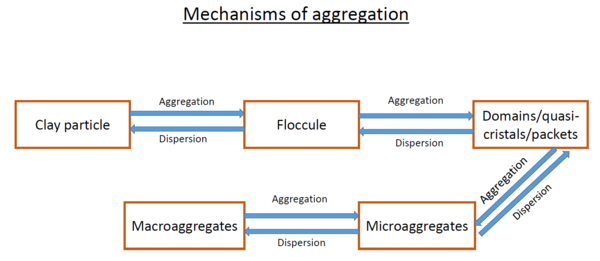
Mechanisms of aggregation
Soil structure is described in terms of grade, size and type of aggregates. In describing the grade or development of the structure, the first division is into apedal soils (lacking soil structure) and pedal soils (showing soil structure). Soil horizons contains aggregates of more than one grade, size or type, the different kinds of aggregates should be described separately and their relationship indicated.
Grade of structure
Grades of structure of pedal soil materials are defined as weak, moderate and strong. Weak structure is barely recognizable, moderate aggregates are observable in place and there is a distinct arrangement of natural surfaces of weakness and in case of strong structure, aggregates are clearly observable.
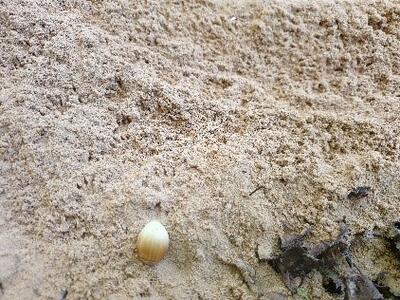
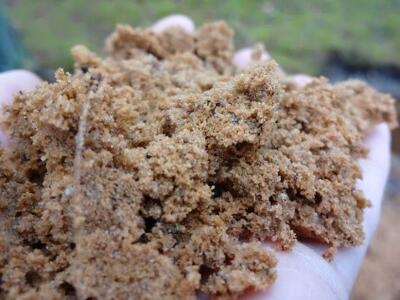

Weak, moderate and strong structure of soil
Size
Soil aggregates are often also characterized by size; macroaggregates are typically greater than 250 μm in size and consist of multiple smaller microaggregates joined by microbes, plants, and animals and the chemicals that they produce. Smaller aggregates are microaggregates. More detailed classification can change among the systems. According to FAO the size classes are very fine, fine, medium, coarse, very coarse and extremely coarse.

Guidelines for Soil Description, fourth edition, FAO, Rome, 2006
Consistence
Consistence refers to the degree of cohesion or adhesion of the soil mass. It includes soil properties such as friability, plasticity, stickiness and resistance to compression. It depends greatly on the amount and type of clay, organic matter and moisture content of the soil. For routine descriptions, the soil consistence in the natural moisture condition of the profile may be described. Wet consistence can always be described and moist conditions where the soil is dry, by adding water to the soil sample.
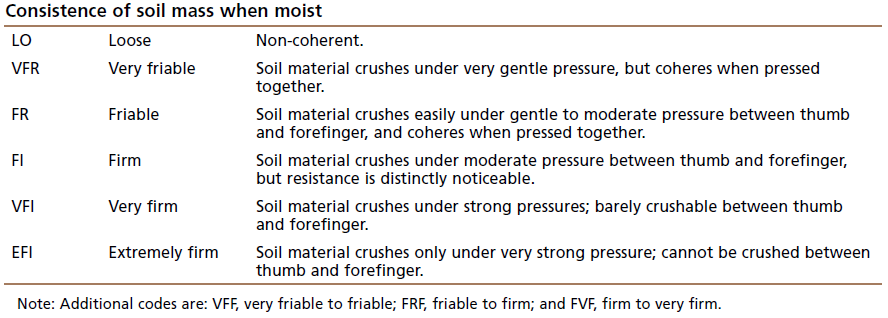
Guidelines for Soil Description, fourth edition, FAO, Rome, 2006
Best conditions to describe the soil structure are when soil water content is at field capacity (70% from maximum water holding capacity; moist conditions).
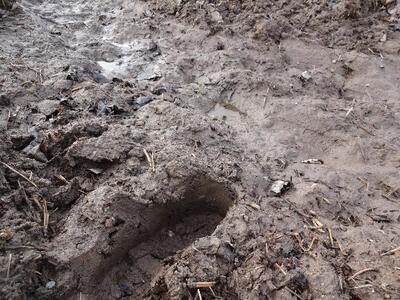
Too wet conditions
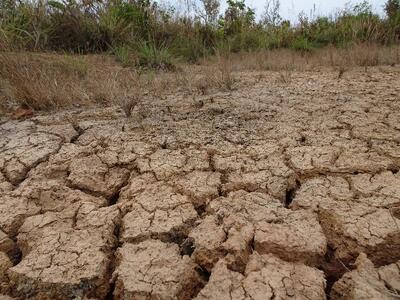
Too dry conditions
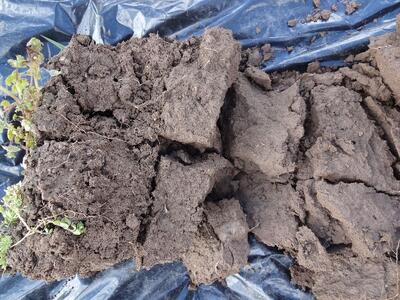
Perfect conditions, soil is equally moist
How to detect soil structure?
Shape:
Distribution of structure by its shape can be done only visually. You have to compare existing structure with reference figures or pictures (see above).
Size:
For size distribution, the most common method in use is by sieves.
Sieving can be wet or dry.
Dry (moist) sieving is used to determine amount of structure aggregates in different size. Choice of sieve type and opening size of sieve depends on interests and size classification system. Sieving is most popular to use when you want to determine the effect of tillage and wind erosion. The wind susceptible fraction is considered <0.84 mm fraction.
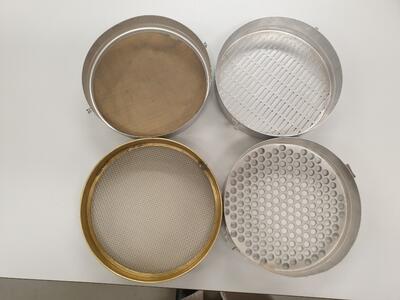
Different style sieves for dry or wet sieving.
Size and distribution of different structure aggregates can be tested by simple “pan” test on the field (see video).
Visual assessment
Remove first the 0 – 5cm topsoil that contains dense and compacted root system without disturbing soil.
-
Remove a 20cm cube of topsoil with a spade.
-
Drop the soil sample a maximum of three times from a height of one meter (waist height) onto the firm base in the plastic box. If large clods break away after the first or second drop, drop them individually again once or twice. If a clod shatters into small units after the first or second drop, it does not need dropping again. Do not drop any piece of soil more than three times.
-
Part each clod by hand along any exposed fracture planes or fissures.
-
Transfer the soil onto the large plastic bag.
-
Move the coarsest parts to one end and the finest to the other end. This provides a measure of the aggregate-size distribution. Compare the resulting distribution of aggregates with the three photographs in Figure 6.
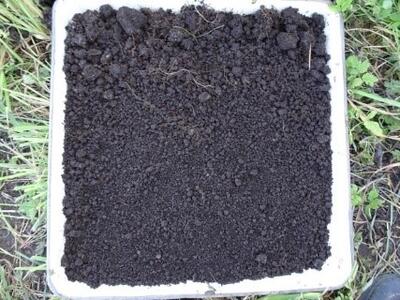
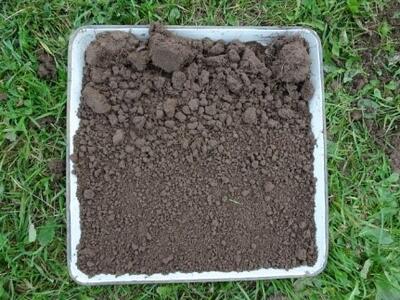
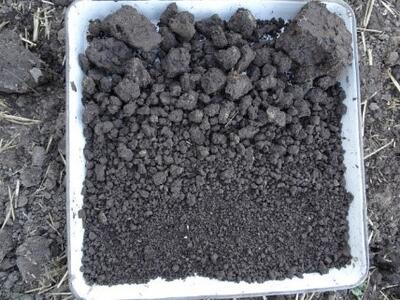
Good condition: Score 2 Moderate condition: Score 1 Poor condition: Score 0
Good: Score 2. Good distribution of finer aggregates with no significant clodding.
Moderate condition: Score 1. Soil contains significant proportions of both coarse firm clods and friable, fine aggregates.
Poor condition: Score 0. Soil dominated by extremely coarse, very firm clods with very few finer aggregates.
(References: http://adlib.everysite.co.uk/adlib/defra/content.aspx?id=000HK277ZX.0HDECKKQLJIF9JD; ftp://ftp.fao.org/docrep/fao/010/i0007e/i0007e01.pdf)
Stability:
One method to test the firmness is wet sieving. It is possible to use multiple or single sieve methods. It is just multiple sieve method is time consuming than single sieve method. Thus easier is to test by single sieves. Firmness of structure aggregates is tested also by exerting pressure to the aggregate and measuring the breaking point.
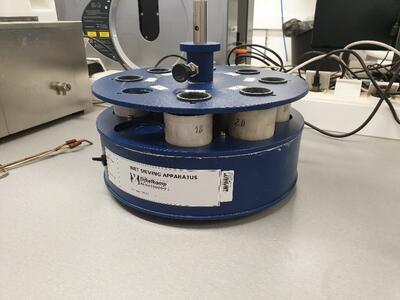
Eijkelkamp wet sieving apparatus.
More simple methods are developed to enable everybody to test their soil structural stability in water. The procedures involves just a simple jar, metal grid with mesh size of 10 mm, water and air-dried soil. Place 3 pieces of 4-6 cm diameter soil aggregates to the water and wait for 5 to 10 minutes. According to the results, (see video and photo) the evaluation can be made.
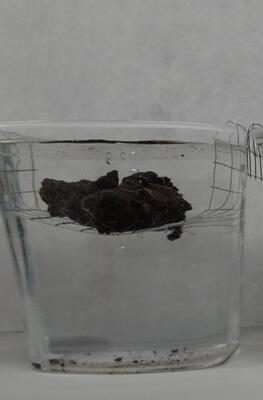
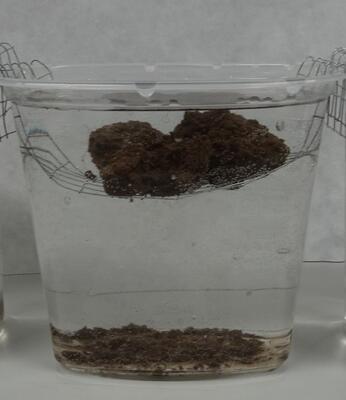
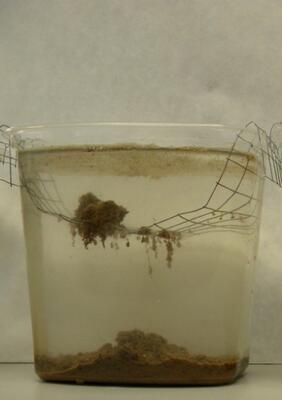
Good conditions Moderate conditions Poor conditions
Good condition: Score 2. No change, water is clean.
Moderate condition: Score 1 Aggregate breaks down but some ones remain intact on the top
Poor condition: Score 0 Aggregate breaks down completely into sand grains
